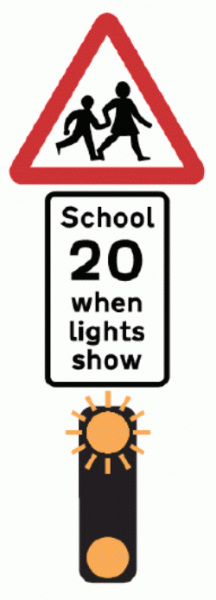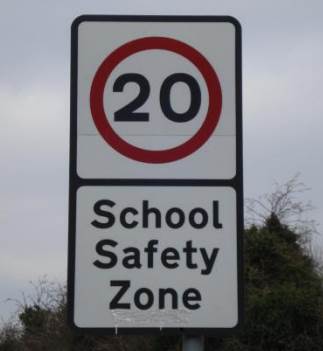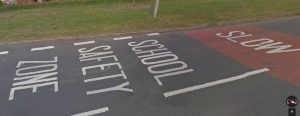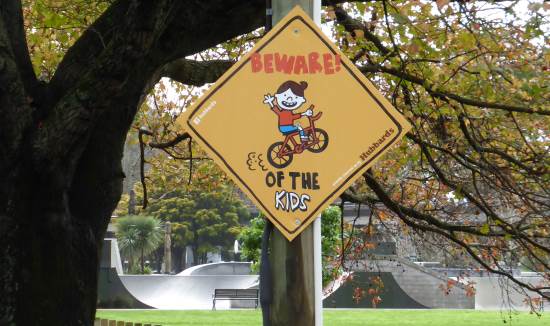School safety zones are a stretch of road immediately outside a primary school where the speed limit is 20mph and no motor vehicle is allowed to stop or park during school operating times. Different schools have different operating hours, so these times can vary. If the speed limit is 30mph then advisory 20mph signs are installed (the limits in this case are not mandatory), although it can be gently enforced using traffic calming measures.

In North Tyneside, for example, the lights flash and the advisory speed limit is in force between 8:15-9:15am and 3-4pm.
The reduced speed in school safety zones mean that pedestrian injuries are less likely, and are less severe in the case of an accident.
The zones can be implemented with minimal disruption: no major road works are required, just signage and road painting. Features suggested for a school safety zone are:
- Road signs

- Advisory 20mph speed limit
- Text road markings

- Traffic calming features such as sleeping policemen, speed tables, speed cushions, chicanes and narrowings
- Waiting and parking restrictions – double yellow lines or no stopping zig-zags; on-street parking should be retained outside the zone on the same side of the road as the school to reduce the need for children to cross the road
- Coloured road surfaces panels (now discouraged due to maintenance costs)
- Flashing wigwags
- Pedestrian crossings
- Yellow backing boards (used in moderation)
- Cycle facilities (cycle lanes, for example)
There are other initiatives such as the Safer Routes to Schools zones in Edinburgh where the 20mph are mandatory.
The have other benefits: children must walk the last short distance to school, giving them some exercise.
However, while it seems obvious to people that schools are a danger zone and speeds should be regulated, the majority of accidents with children occur en route to school, but not near the school. Therefore implementation of school safety zones is assessed on a case-by-case basis, and if a school has no record of accidents in close proximity it’s less likely that any application for funding for a SSZ will be approved.
Schools can use community-designed signs as an alternative.

